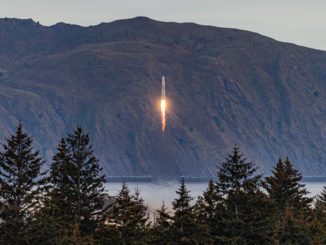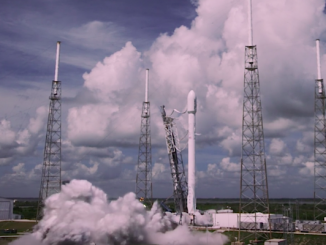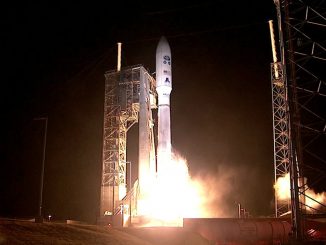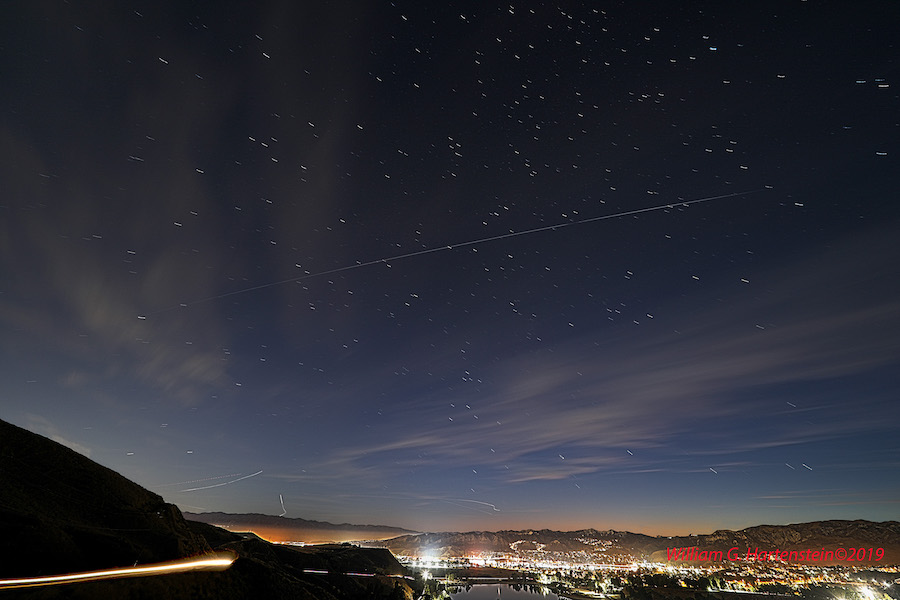
The 60 Starlink satellites deployed Monday by a SpaceX Falcon 9 rocket have traced paths across twilight skies around the world this week, but their brightness is expected to dim as the spacecraft — designed to beam broadband signals down to Earth — spread out and climb to higher altitudes.
Using satellite tracking apps and websites, skywatchers anticipated the train of Starlink spacecraft following Monday’s launch from Cape Canaveral. An earlier set of 60 Starlink satellites launched in May were more reflective than expected, sometimes flaring to become as luminous as the brightest stars in the sky.
The 60 satellites orbited on SpaceX’s second dedicated Starlink launch were similarly bright this week. SpaceX plans to launch thousands of Starlink satellites in the coming years, including hundreds more in 2020.
SpaceX deployed the second batch of 60 Starlink satellites into a 174-mile-high (280-kilometer) orbit, around 100 miles (160 kilometers) below the initial deployment orbit of the first 60 Starlink craft in May.
The company said the lower orbit will allow non-functioning satellites to more quickly re-enter the atmosphere and burn up. The satellites launched Monday are “100% demisable,” meaning they are designed to completely burn up during re-entry.
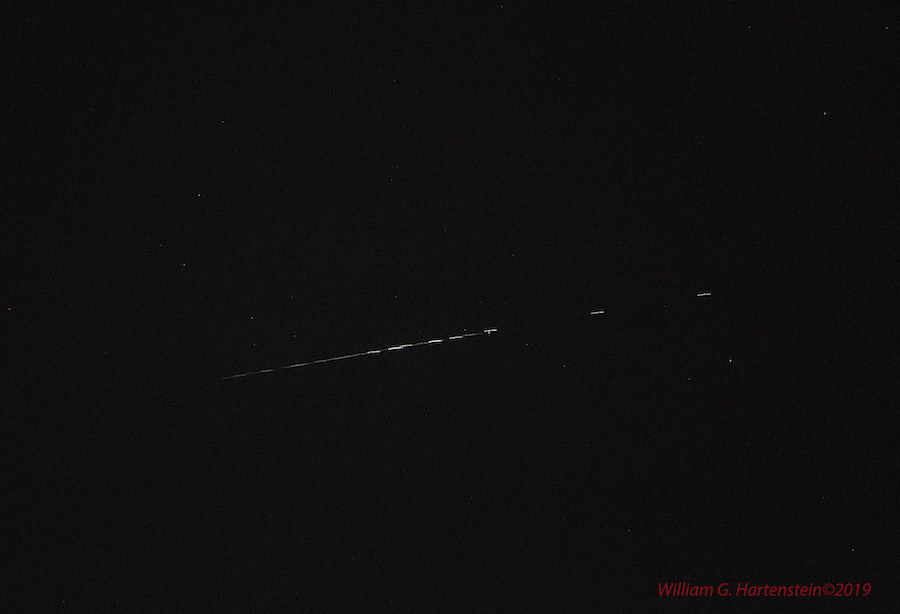
The satellites will use ion thrusters fueled by krypton to maneuver into a 217-mile-high (350-kilometer) orbit for testing. The Starlink craft are expected to eventually climb to an altitude of 341 miles (550 kilometers), where SpaceX is building out the Starlink network with an initial block of roughly 1,500 satellites.
Designed to provide global Internet service, the Starlink network is one of several “mega-constellations” of broadband satellites. SpaceX is in competition with OneWeb, Amazon and Telesat, which are also developing fleets of hundreds to thousands of small Internet relay satellites in low Earth orbit.
SpaceX says its network will provide coverage over Canada, the northern United States and regions at similar latitudes next year, followed by the launch of global service.
The Starlink satellites launched Monday include several upgrades, such as Ka-band antennas and an increase in data throughput.
Some astronomers raised concerns that the launch of thousands of Starlink satellites — along with thousands more planned spacecraft from SpaceX’s competitors — could impact science observations from ground-based optical and radio telescopes.
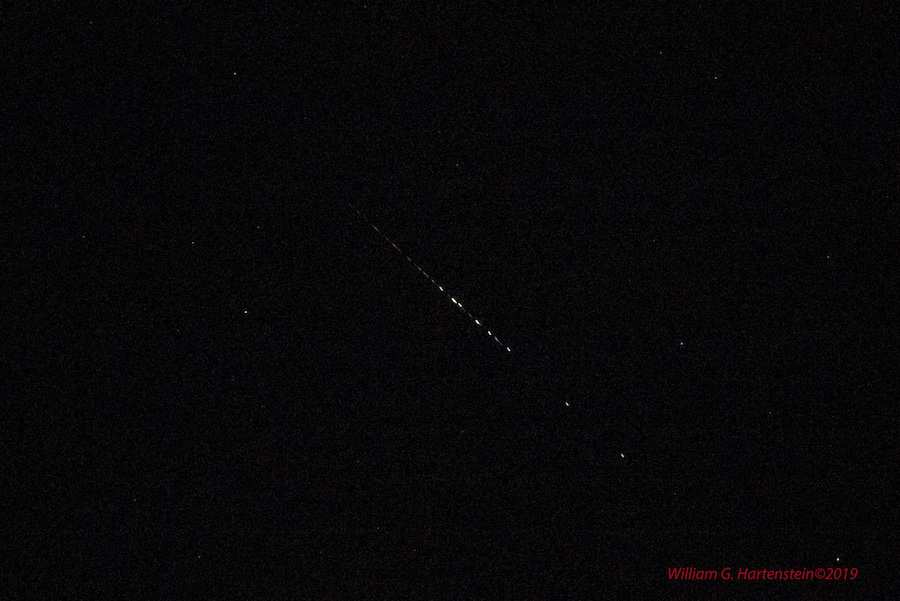
SpaceX says it is working with the astronomy community to mitigate the impacts. A company spokesperson said the base of future Starlink satellites will be black, reducing their reflectivity.
The satellites are only visible near dawn and dusk, when the Earth’s surface is in darkness, but when the spacecraft are in sunlight.
Estimates in the days after each Starlink launch put the satellites as bright as +1 magnitude. But the Starlink satellites sent to space in May have dimmed to about +4 to +7 magnitude, near the limit of naked eye visibility for most ground-based observers, according to Jonathan McDowell, an astronomer at the Harvard-Smithsonian Center for Astrophysics and respected tracker of global space activity.
Additional photos of the Starlink satellites this week are posted below.
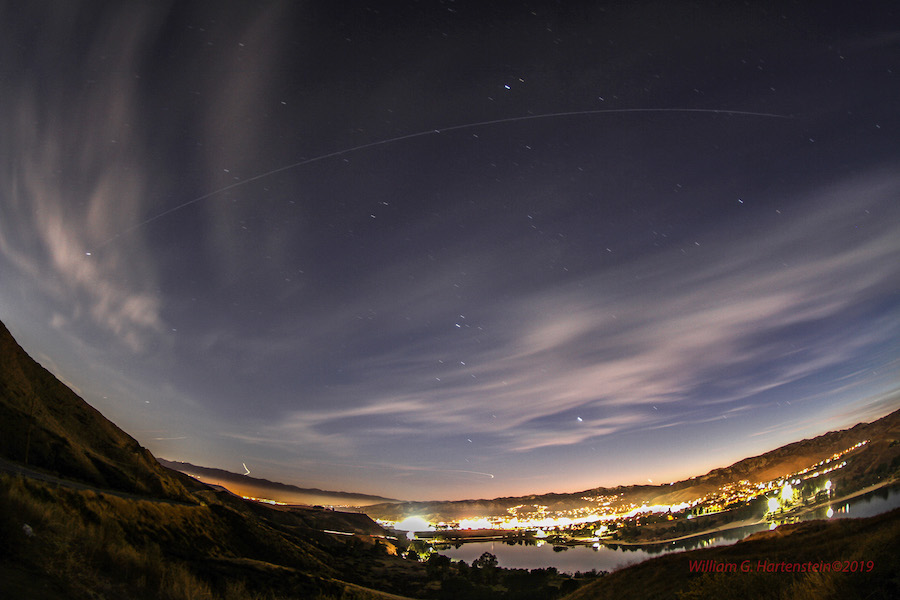
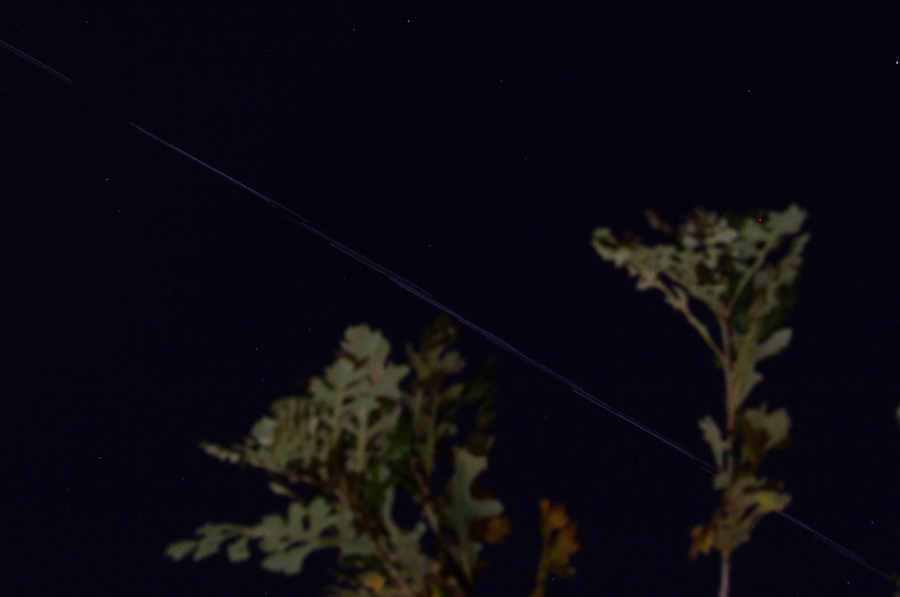
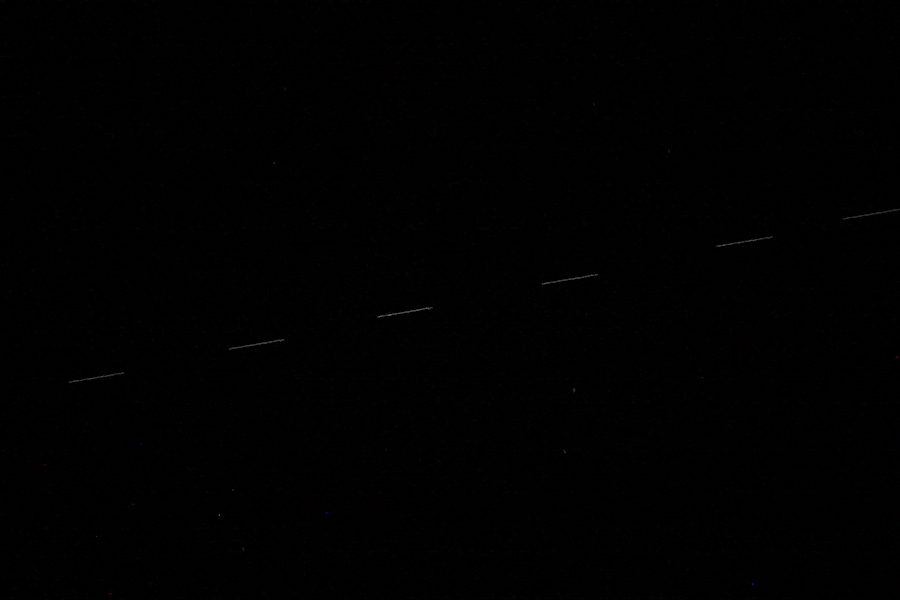
Email the author.
Follow Stephen Clark on Twitter: @StephenClark1.

